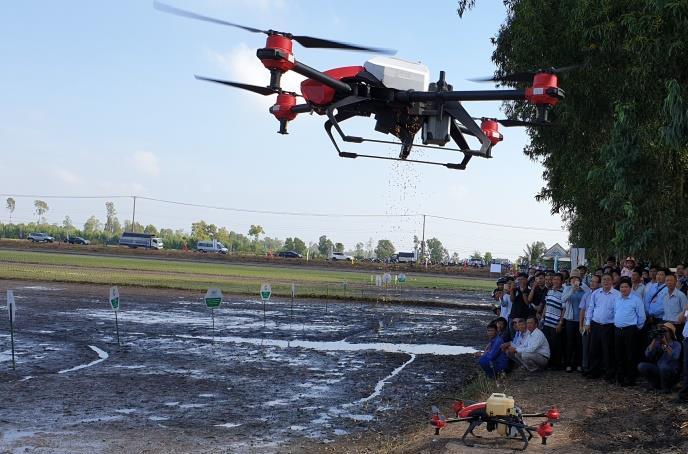Mechanization to improve rice production effectiveness
 |
|
Machines for sowing and transplanting |
To promote the mechanization in rice seed sowing and transplanting, on 29 November 2019, at Hamlet 11, Vi Trung commune, Vi Thuy district, Hau Giang province, the Ministry of Agriculture and Rural Development cooperated with Hau Giang Provincial People’s Committee (PPC) to organize “the Ceremony for Launching Mechanization of Rice Sowing and Transplanting in the Mekong Delta”. This event was co-chaired by Minister Le Quoc Doanh and Vice Chairman of Hau Giang PPC Nguyen Van Tuan.
In delivering his speech at the ceremony, Vice Minister Le Quoc Doanh stated that the rice production sector in Viet Nam in general and in the Mekong Delta in particular had recorded outstanding developments, not only supplied sufficient food but also exported to help the nation earn foreign currencies. To raise the economic effectiveness, either rice yield must be increased or production costs must be reduced. However, the rice yield in the Mekong Delta has reached a high level, about 6 tons/ha on average, which can be the “ceiling” yield. Therefore, mechanization is the only way to reduce production costs, especially mechanization in sowing and transplanting, which has not been applied.
With machines, farmers need only 40-50 kg of seed per hectare, instead of 150-200 kg in manual sowing and transplanting. With lower amount of seed, farmers can afford good seed for their production. Furthermore, lower density helps rice plants develop better, prevent pests, improve fertilizer efficacy and consume less water. Especially, the rice quality and selling prices can be raised. Despite these obvious benefits from sowing and transplanting by machines, the mechanized area is still limited.
In 2019, the Mekong Delta has 370 transplanting machines, especially Soc Trang province with 100 machines, followed by Dong Thap province with 80 machines and Long An with 78 machines. If such machines are operated at full capacity they can serve only 1% of the planted area. In other words, the demand for transplanting by machines remains very high. Therefore, a program should be launched to promote the mechanization in sowing and transplanting in the whole region. This will help the region expand quickly the area sown and transplanted by machines, which will reduce a large amount of seed used, ensure optimal planting density, lower costs, raise yield, improve quality and enhance production effectiveness.
After the launching ceremony, the National Extension Centre formulated an action plan with following activities:
- Strengthen the communication of the effectiveness achieved by mechanized models through extension fora, conferences, workshops, publications and materials, especially on mass media…;
- Promote farmer training on intensive farming of rice transplanted by machines;
- Continue to develop extension demonstration models on mechanization in sowing and transplanting;
- Support and encourage the establishment of production teams and services which use machines in sowing and transplanting.